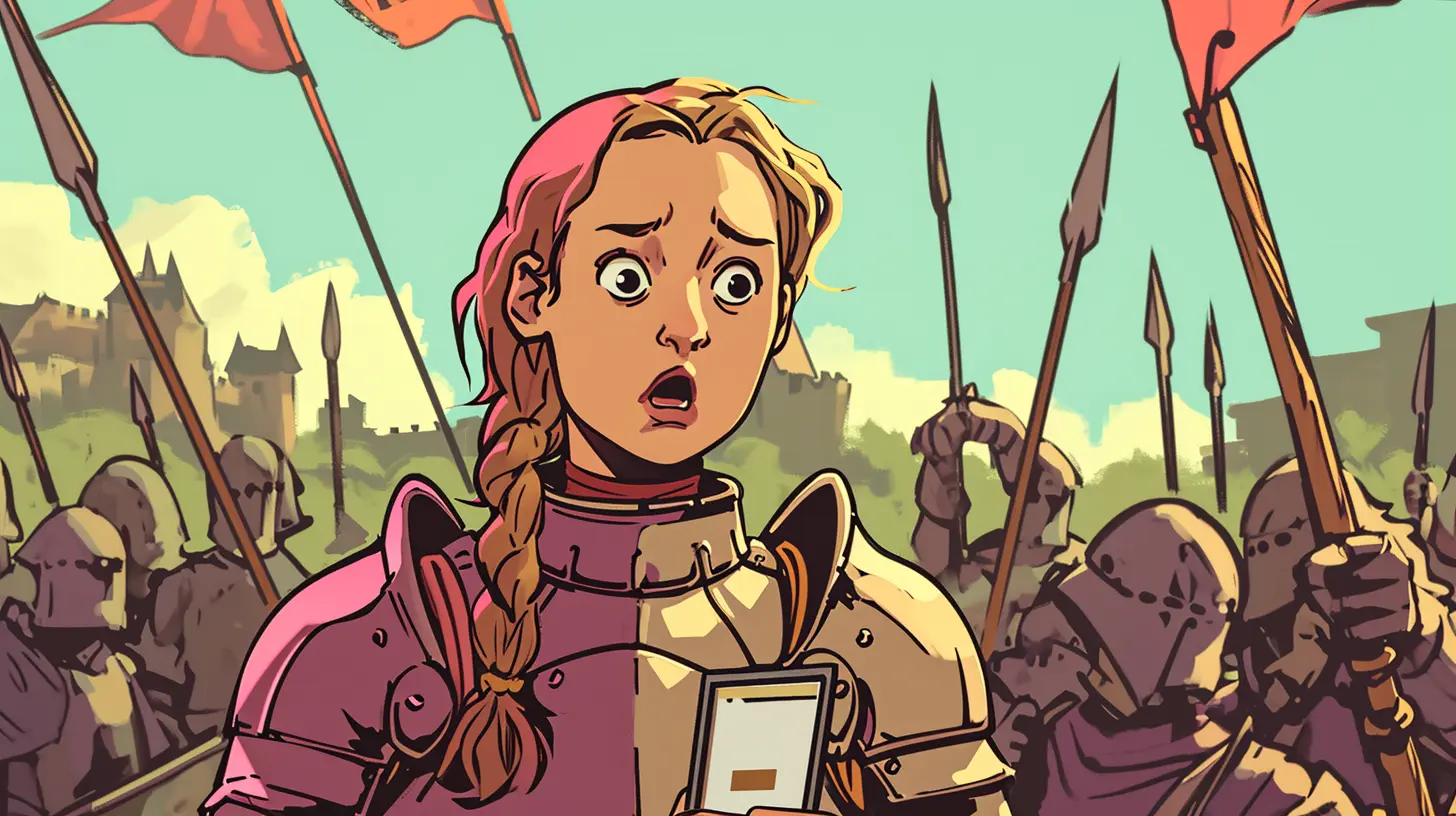#RomeWasntBuiltInADay
Imagine if Julius Caesar had access to social media. Would he have tweeted “Veni, Vidi, Vici” after conquering Gaul? Could the Ides of March have trended on Twitter? In this blog post, we’re mashing up the ancient world of Julius Caesar with the modern realm of hashtags and status updates. From his early life to his dramatic end, let’s explore how Caesar might have navigated both the Roman Senate and the world of social media.
Now, let’s turn back the clock to where it all began, shall we?
#EarlyBirdGetsTheWorm
Before he became a hashtag legend, Julius Caesar was just another Roman trying to climb the political ladder. Born into the Julii family, a clan with roots going back to the founding of Rome, young Julius had the perfect blend of ambition and noble blood. His early life was like a political drama series, complete with family rivalries, alliances, and a stint as a pirate hostage (yes, you read that right!).
Imagine young Julius updating his status: “Just got kidnapped by pirates. LOL.”
His early career was marked by a series of calculated moves, from serving as a priest of Jupiter to his military campaigns in Asia Minor. It’s the kind of stuff that would have made for great vlogs or Instagram stories!
His rise wasn’t just about military might. Caesar knew how to play the social game. He was the kind of guy who would’ve been great at political tweets, using just the right mix of wit and wisdom to gain followers in both the Senate and the streets of Rome. Caesar’s early life was more than just military campaigns and political manoeuvring; it was a masterclass in networking and self-promotion. If social media existed back then, he’d be the kind of guy who knew exactly when to post a selfie with a senator or a philosophical quote to get maximum likes. His marriage to Cornelia, and later to Pompeia, were not just matters of the heart; they were strategic alliances that helped him climb the social ladder.
When he was elected as the High Priest of Jupiter (Pontifex Maximus), it was akin to being verified on Twitter – a blue checkmark in the Roman Republic!
He used every position he held, from military tribune to quaestor, to build his brand. He was also a master of the spoken word. His speeches in the Forum could be likened to going viral in the Roman world. He knew how to captivate an audience, whether he was addressing the Senate or the public. Had he had access to YouTube or podcasts, he might have been a sensation, blending eloquence with the art of persuasion.
In this era of his life, Caesar was essentially building his personal brand, laying the groundwork for the legendary status he would later achieve. He was a man ahead of his time, a born influencer who knew the power of public perception and used it to his advantage in the political arena of Rome.
#GaulsGoneWild
Julius Caesar’s campaign in Gaul (modern-day France and Belgium) was the ancient equivalent of going viral. From 58 BC to 50 BC, Caesar was the influencer of the Roman Republic, turning what was supposed to be a defensive campaign into an aggressive conquest.
His updates would have been the talk of the Roman social media world: “Just conquered another tribe, #GaulsGoneWild.”
These campaigns were more than just military victories; they were branding exercises. Each conquest brought him wealth, fame, and a loyal army. Imagine if he had Instagram or YouTube; his feed would be filled with dramatic battle scenes, motivational speeches to his troops, and the occasional scenic photo of the Gallic countryside.
But it wasn’t all hashtags and victory posts. Caesar’s campaigns were brutal, resulting in the subjugation of the entire region and significant loss of life. While his victories were celebrated in Rome, the reality on the ground was far more complex and somber. Had social media existed, this might have sparked heated debates and discussions across various platforms.
His reports, famously known as “Commentarii de Bello Gallico,” were the ancient equivalent of a blog series, detailing his military exploits. These writings, which Caesar likely intended to use to bolster his image back in Rome, would have been the perfect content for a LinkedIn article or a Medium post.
Julius Caesar’s Gallic Wars were filled with moments that would have broken the ancient Roman internet. Let’s zoom in on a few key events:
-
The Battle of Alesia (52 BC): This was the climax of the Gallic Wars, where Caesar laid siege to the Gallic stronghold of Alesia. Vercingetorix, the Gallic leader, was defeated in a dramatic showdown. If Twitter had been around, #BattleOfAlesia would have been trending worldwide, complete with live updates, strategic analyses, and probably a few memes about Caesar’s daring tactics.
-
Bridge over the Rhine (55 BC): Caesar built not one, but two bridges across the Rhine River in a ridiculously short time to show the Germanic tribes Rome’s engineering prowess. Imagine a viral YouTube video showing a time-lapse of the construction, racking up millions of views and leaving viewers in awe of Roman engineering skills.
-
The Invasion of Britain (55 - 54 BC): Caesar’s expeditions to Britain were the first known Roman incursions onto the island. Although not entirely successful, these invasions were big news. Instagram stories of Roman ships approaching the British coast and tweets about encountering the Britons would have been sensational.
These campaigns were more than military conquests; they were a series of episodes in Caesar’s personal reality show. His genius lay not just in his military acumen but in his ability to craft a narrative of invincibility and heroism that resonated with the Roman public. He was creating a legacy, and each victory added to the mystique of his persona.
#CrossingTheRubicon
The year was 49 BC, and Caesar made a decision that would change the course of history. He might have tweeted “Alea iacta est” (the die is cast), as he led his army across the Rubicon River, a boundary no general was allowed to cross with an army. Imagine the buzz on Roman social media:
#CrossingTheRubicon would be trending, with live updates, hot takes, and almost certainly a few conspiracy theories about what Caesar was up to.
Political analysts and average citizens alike would be glued to their scrolls (or screens, in our imaginative scenario), speculating about the future of Rome.
This moment was more than just a physical crossing; it was a bold statement of defiance and ambition. Caesar was essentially declaring war on the Roman Senate and his rival, Pompey. In today’s terms, it was like tagging a celebrity and hitting ‘send’ on a particularly controversial tweet and watching the notifications roll in.
The crossing of the Rubicon was the ultimate power move, a blend of military strategy and personal branding. Caesar knew the art of spectacle, and this moment was theatricality at its finest. Had social media been around, it would have been the perfect platform for him to broadcast this defining moment of his career, turning a military manouver into a public relations coup.
-
The Context: The crossing of the Rubicon River was not just a spontaneous act; it was the culmination of a long-standing political and personal rivalry between Caesar and Pompey. The Roman Senate, influenced by Pompey, had ordered Caesar to disband his army and return to Rome as a private citizen. This would have left Caesar vulnerable to his enemies. It was like being asked to delete all your followers and start from scratch – not something a social media influencer, let alone a Roman general, would take lightly.
-
The Decision: Caesar’s decision to cross the Rubicon was a calculated risk. It was a declaration of civil war, and there was no going back. Imagine the suspense and drama this would have created on social media platforms. Live blogs, emergency podcasts, and heated debates on Roman news channels would have filled the digital airwaves. Imagine your favourite streamer switching to a rival platform.
-
The Phrase “Alea Iacta Est”: When Caesar uttered “Alea iacta est,” it wasn’t just a cool catchphrase; it was a statement of determination and acceptance of fate. #AleaIactaEst would symbolize moments of bold decisions and irreversible choices, trending across platforms.
The crossing of the Rubicon was a masterstroke of military and political strategy, amplified by the dramatic flair that was typical of Caesar. It was an event that reshaped Roman politics and would have undoubtedly broken the internet in the social media age.
#EtTuBrute
The Ides of March, 44 BC, would have been a day that broke the Roman internet. Julius Caesar’s assassination was not just a pivotal moment in Roman history; it was a story ripe for social media frenzy. #EtTuBrute would be trending worldwide, with real-time updates, conspiracy theories, and perhaps even a live stream of the Senate meeting gone wrong.
Imagine Twitter exploding with updates as rumours of Caesar’s assassination spread.
“Breaking: Reports of turmoil in the Senate! #IdesOfMarch” “Confirmed: Julius Caesar has been assassinated! #RomanTragedy”
The assassination, orchestrated by a group of senators including his once trusted ally Brutus, was the ultimate betrayal. A scandalous political exposé. Social media platforms like Facebook and Reddit would be rife with discussions and debates, dissecting every angle of the incident.
The immediate aftermath would be just as chaotic online as it was in the streets of Rome. Instagram stories and Snapchat updates from citizens and senators alike would offer a mosaic of reactions – from shock and grief to relief and jubilation.
Had Caesar’s life been chronicled on social media, his assassination would have been the climax of his story, a dramatic turn that would have forever changed the narrative of Roman history. The event would not only dominate news feeds for days but also spark a series of political changes leading to the end of the Roman Republic and the rise of the Roman Empire.
-
The Conspiracy: The plot to assassinate Caesar wasn’t a spur-of-the-moment decision. It was a well-orchestrated plan by a group of senators, known as the Liberatores, who saw Caesar’s growing power as a threat to the Republic. Secretive DM groups and encrypted chats would be buzzing with conspiracy plans, cryptic messages, and hushed digital meetings.
-
The Ides of March: The date, March 15, was not chosen randomly. The Ides of March was a traditional day in the Roman calendar for settling debts. Symbolically, it was the day the conspirators chose to “settle their debt” with Caesar. The irony of this choice would not be lost on modern-day social media, spawning memes and thought-provoking blog posts.
-
The Location – Theatre of Pompey: The assassination took place in the Theatre of Pompey, not in the Roman Senate as often depicted. This location was significant because it was a structure built by Pompey, Caesar’s former ally and rival. If social media existed, the venue would add another layer to the narrative, with historical bloggers and influencers discussing the symbolism of this choice.
-
The Assassination: As Caesar was attacked, it is said that he saw Brutus among the assassins and uttered, “Et tu, Brute?” (You too, Brutus?). This phrase would become a viral quote, symbolising betrayal and shock. In today’s world, it would be trending on Twitter, with various interpretations and references popping up across social media platforms.
-
The Immediate Reaction: The assassination threw Rome into turmoil. If live-streamed or live-tweeted, the public’s reaction would be instantaneous and widespread. From hot takes on Twitter to in-depth analysis on news blogs, the assassination would spark a firestorm of digital content, with everyone from the common citizen to the elite senator weighing in.
The assassination of Julius Caesar was a moment that shook the world. It was a blend of political drama, personal betrayal, and public shock, resonating through the ages as a pivotal moment in human history.
#CaesarInTheClouds
As we reach the end of our journey through Julius Caesar’s life, reimagined with a social media twist, it’s clear that his story is as relevant today as it was over two millennia ago. His life, filled with ambition, triumph, and betrayal, would have been the perfect fodder for our modern digital landscape.
Had Caesar lived in the era of hashtags and viral content, he might have been a political influencer, a military vlogger, or even a meme legend. His legacy, however, transcends any potential online persona. The real Caesar left an indelible mark on history – shaping the Roman Empire, influencing language, military tactics, and governance.
In a way, Caesar’s story is the ultimate reminder of the power of narrative and how it shapes our understanding of history. Whether through ancient texts or hypothetical social media feeds, the way we tell stories shapes how we perceive the figures of the past.
As we sign off, let’s imagine for a moment – what if historical figures did have social media? How would their stories unfold differently? Perhaps it’s a reminder that behind every tweet, post, or story, there’s a narrative waiting to be explored, just as rich and complex as Caesar’s.





Leave a comment